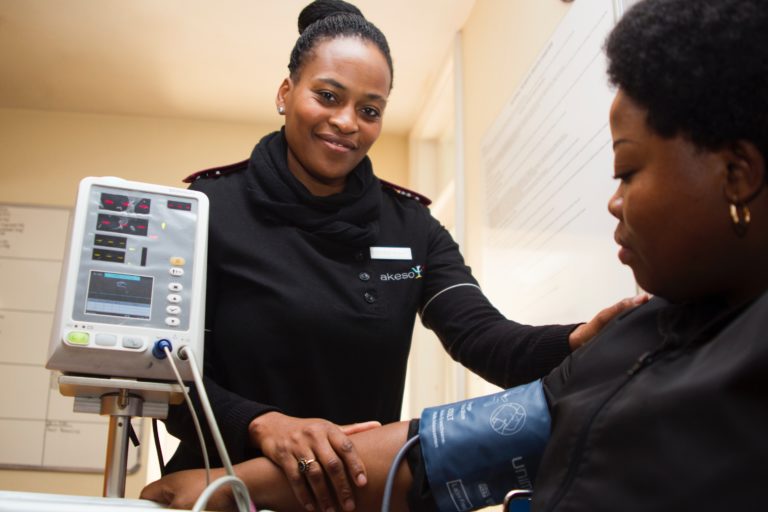Top Takeaways From All the Top HIMSS Takeaways
We picked the best bits on patient experience from all the leading publications.

Top Takeaways from Electronic Health Reporter
1. Stay Ahead of Gen Z Needs
Younger generations are increasingly unsatisfied with the conventional aspects of healthcare.
As they become the largest living generation and hold the most power to influence future healthcare models, millennials are looking to take healthcare into their own hands and are actively paving the way for the growth of non-traditional care models, such as retail clinics and virtual and digital services.
For example, recent Accenture research has found that one-third of millennials and almost half of Gen Z’ers say they don’t have a primary care physician, compared with just 16 percent of baby boomers. Providers and payers must aim to stay one step ahead of these shifts – offering strong digital capabilities and meaningful choices that provide services on patients’ terms – if they are to earn loyalty and fulfill the needs of all generational groups.
Kaveh Safavi, M.D., J.D., head of global health practice, Accenture
2. Better User Centered Design
Empathy for users of health IT – patients, clinicians, and those who support them – is the key to developing and implementing sustainable innovations. This requires truly user-centered design and the recognition that ideals like patient-centered care may sound simple, but can be very hard to achieve in the real-world. Solutions need to be easy. And they must clearly address the problems that users are trying to solve.
Gregory Makoul PhD, MS, founder and CEO, PatientWisdom, Inc.
3. Data Needs to be Unlocked
I hope the number one takeaway from the conference is the understanding that unlocking the power of data will help move patient critical data securely to the edge at the exact time, place and person wherever it is needed, transforming healthcare experiences for patients, clinicians and administrators. Retail experiences and healthcare expectations are blending together.
Patients expect their healthcare provider to use technology to save them time, add convenience and better outcomes.
Another takeaway is how clinicians are asked to do more every day in less time and are desperately seeking the tools they need to deliver care efficiently at the bedside or automate inefficient and redundant tasks. With clinical mobility and improved collaboration, clinicians will be able to streamline care management and care-team communication, expand telehealth services, and save time and money finding medical equipment.
Barbara Casey, Director of U.S. Healthcare, Cisco
4. A New Health Economy
The theme will be “don’t go it alone.” The central goal will be focused around the patient as a consumer, and partnerships will be key to achieve success. I’m looking forward to the non-traditional collaboration and partnerships across payers, providers, pharma and new entrants. What we will see is emblematic of the new health economy, and the “gold rush” around patient experience, data, digital therapeutics. The outcomes will hopefully leave us with the winner … the consumer.
Gurpreet Singh, partner and US health services sector leader, PwC

Top Takeaways from Patient Point
1. Better Together
The theme of HIMSS19 was “Champions of Health Unite.” Simply put, patients get better care when everyone in the broader healthcare community works together.
No one echoed this message louder than the Centers for Medicare and Medicaid Services (CMS). On HIMSS Day 1, CMS Administrator Seema Verma announced a landmark proposal to give patients access to one unified electronic medical record, regardless of provider.
This concept of providing a cohesive patient experience doesn’t have to start with a national effort, though. In fact, an improved patient experience can start literally with the first step (or ride) patients take. In one session, we heard about how patients at Jefferson Health were having difficulty accessing shuttle services on its campus in the heart of Philadelphia.
To solve this problem, leaders and digital designers collaborated to launch and promote a digital shuttle tracker, resulting in a 70 percent increase in ridership!
2. Innovate for the end user
Here’s another message we heard on repeat: Innovation for the sake of innovation is not effective. Within healthcare IT, this means that technology-enabled offerings such as patient portals and digital engagement platforms must quickly demonstrate a clear benefit to the end user and make things easier—not harder.
So, what do patients and HCPs want? For patients, it’s customizable tools that can meet their unique needs along their individual health journey. And providers want new systems and platforms to quickly and easily fit within their existing workflows. Hospitals and health systems must keep these end user needs at the forefront when designing and implementing any sort of technology-enabled solution.
A well-designed patient portal is a great example of friction-free health IT. One session we attended focused on the power of the portal from a mom’s perspective, showcasing how the portal helped her learn more about her son’s Crohn’s Disease, communicate with his providers more efficiently and manage his coordination of care.
Top Takeaways from HealthSystem CIO
1. “We shouldn’t need to be a patient to appreciate the challenges we inflict.”
The opening by Cris Ross from Mayo was the most powerful. Gut wrenching. We all should not need to be a patient to appreciate the challenges we inflict upon our care teams, patients and families. I observe so many opportunities of improvement, every time I am a consumer.
We are all still accepting the status quo and timelines for improvement that span years. Everyone in #HCIT should spend quality time rounding with every service line we support and they should do the same.
Rounding with purpose is not only for C -level leaders. The infrastructure teams and operational teams should shadow their customers and fully appreciate the impact they have on the patient experience. Observe what happens when a system outage occurs and clinicians are using downtime procedures. It’s not pretty. Witness firsthand the impact on patients who are awaiting treatment and dealing with anxiety related to their medical issues.
-Jimmy Weeks, VP of IS, Yale New Haven Health
Read Full Article: Health System CIO
Sandeep Deokule
Vinit Patil heads up Devcool Media Labs. A technologist at heart and CX evangelist having built consumer-like experiences and branding for Fortune 500 companies.
Want to hear more on best practices in healthcare and wellness UX? subscribe to our blog